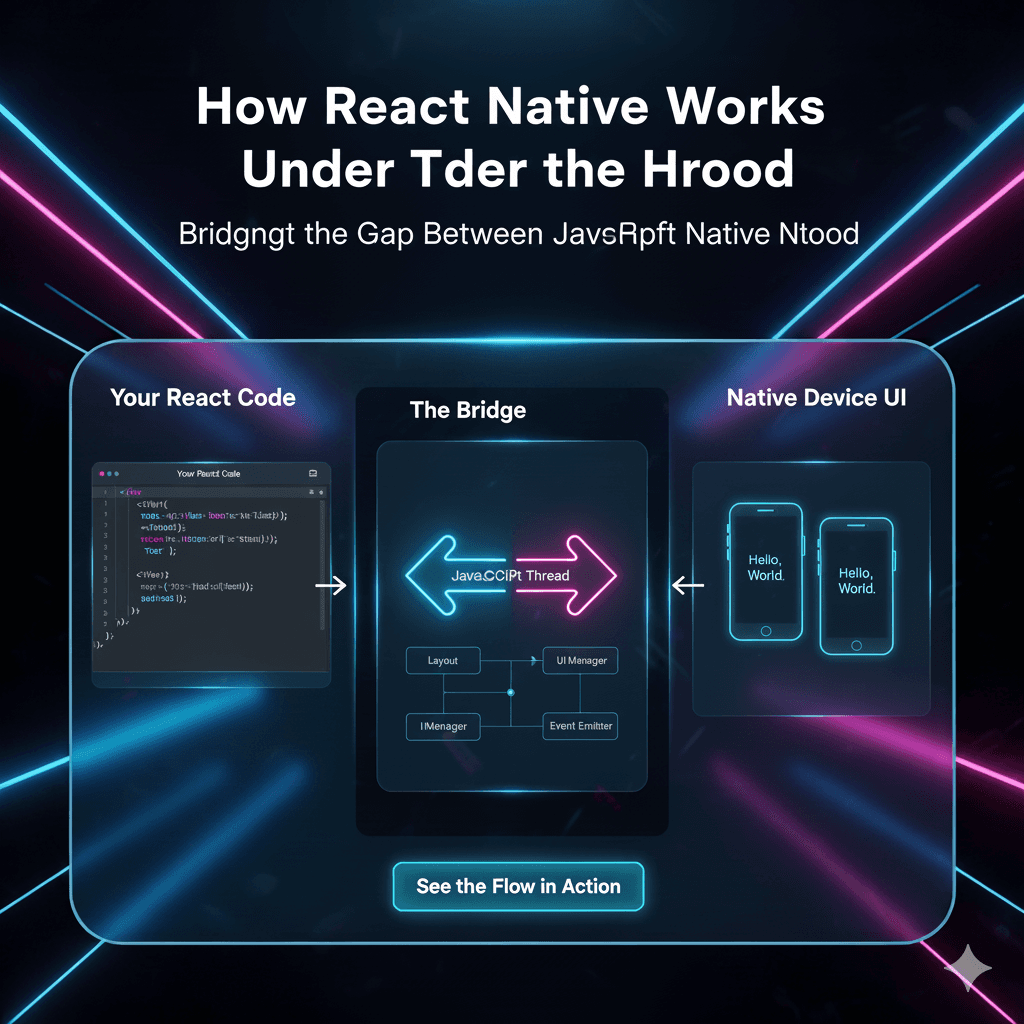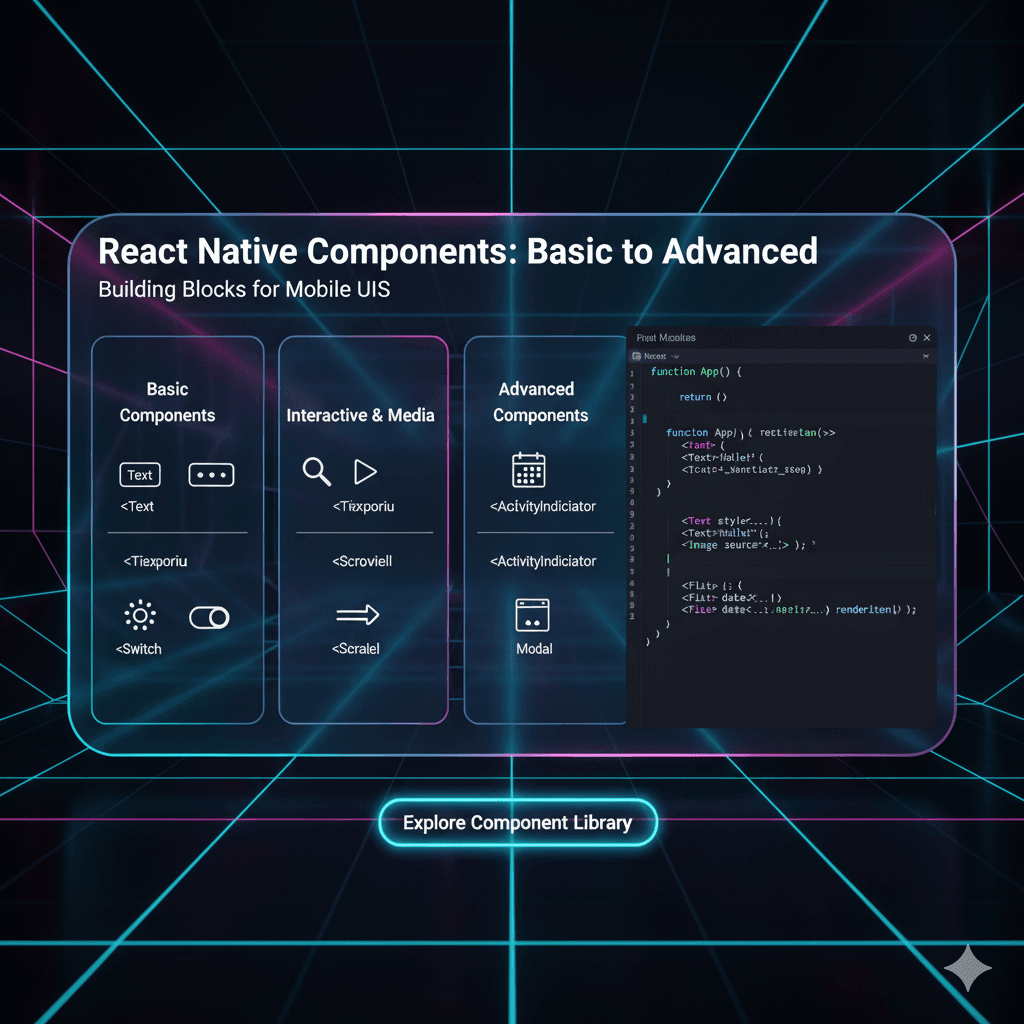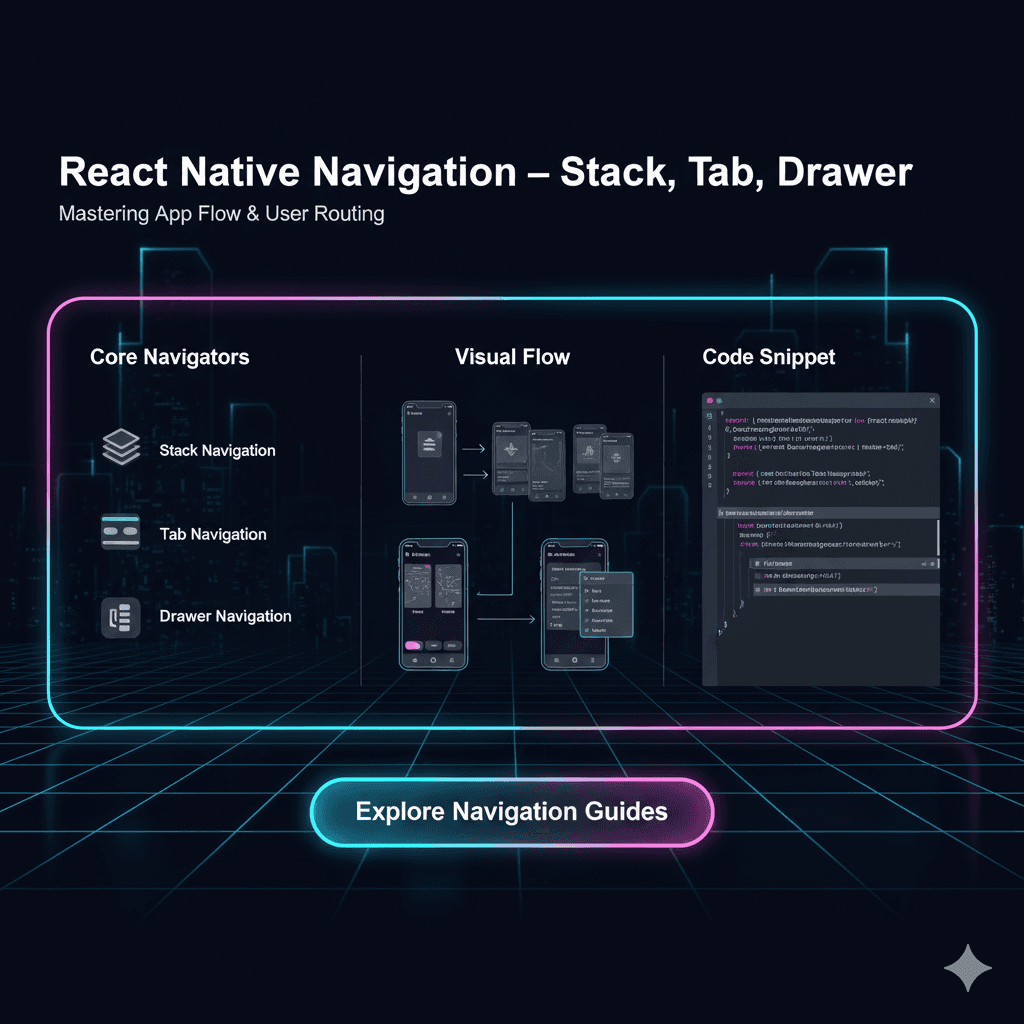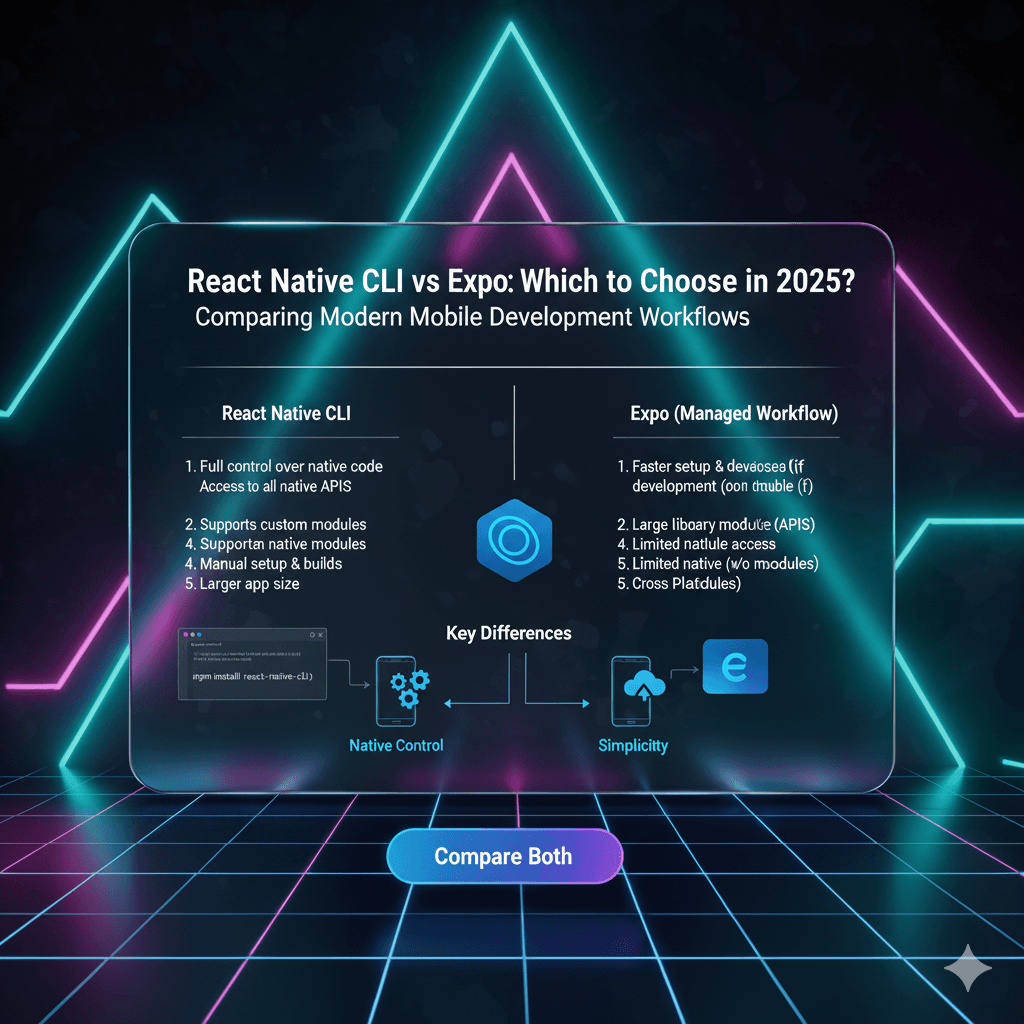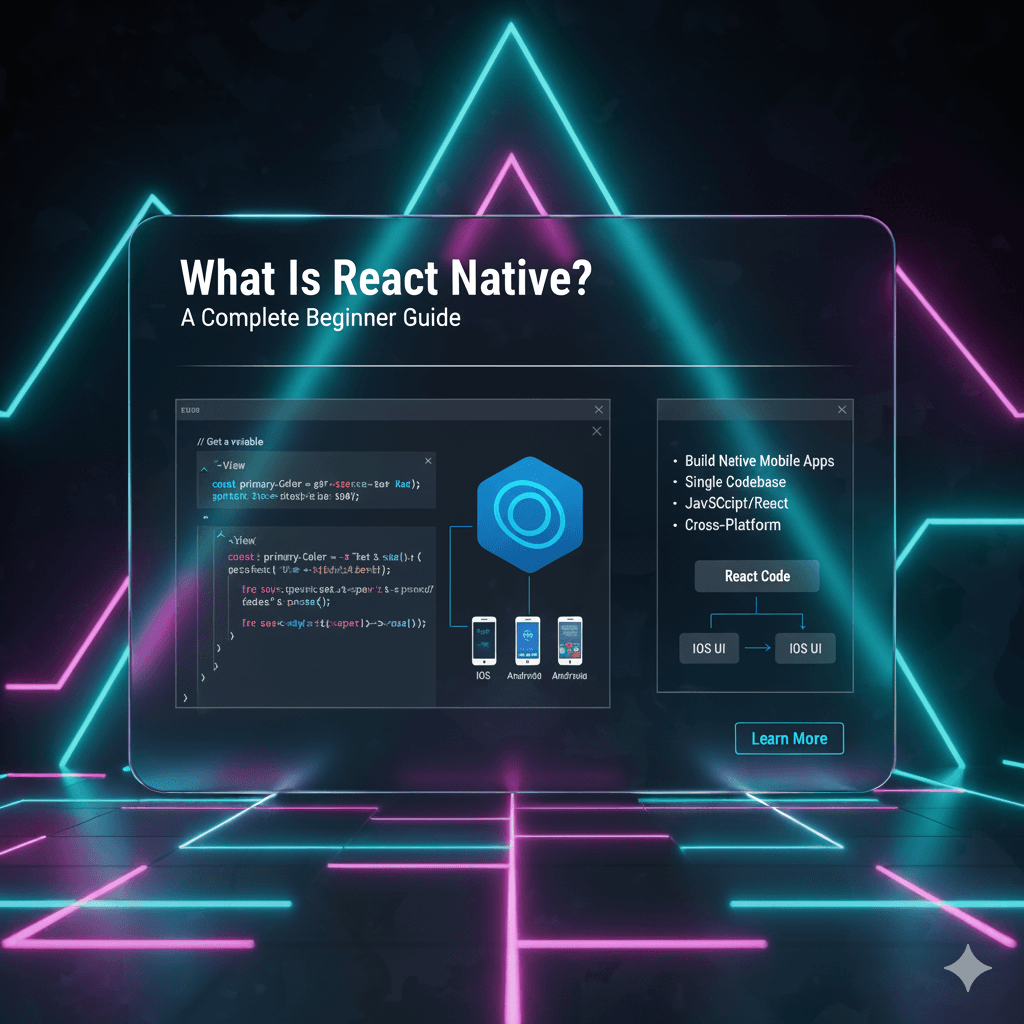React Native Gesture Handler Explained: Buttery Smooth Gestures for Your App

Tired of janky app gestures? Master React Native Gesture Handler with this in-depth guide. Learn definitions, real-world examples, best practices, and build pro-level UX. Enroll at codercrafter.in to learn more

React Native Gesture Handler Explained: Buttery Smooth Gestures for Your App
React Native Gesture Handler Explained: Ditch the Jank, Embrace the Smooth
Let's be real for a second. We've all used that one mobile app. You know the one. You try to swipe through a carousel, and it feels like you're dragging it through mud. You go to pull-to-refresh, and the animation stutters. It just feels... off.
That "off" feeling is often a direct result of how touch gestures are handled. For a long time, React Native relied on the JavaScript thread for gestures, which could lead to this frustrating lag, especially when the JS thread was busy.
Enter React Native Gesture Handler (RNGH). If you're serious about building mobile apps that feel native down to their very core, this library isn't just a nice-to-have—it's pretty much essential.
In this deep dive, we're not just going to skim the surface. We're going to get our hands dirty and understand why RNGH is a game-changer, how to use it, and the best practices to make your users say, "Wow, this app feels smooth."
So, What Exactly is React Native Gesture Handler?
In simple terms, React Native Gesture Handler is a library that provides a native-driven way to handle touch gestures in your React Native apps.
Let's break down what "native-driven" means, because that's the magic sauce.
In the old way (using PanResponder or basic Touchable components), when you touch the screen:
The native side (Objective-C/Swift or Java/Kotlin) senses the touch.
It sends this information over the "bridge" to the JavaScript thread.
Your JavaScript logic figures out what to do (e.g., "this is a swipe!").
It sends commands back over the bridge to the native side to update the UI.
This back-and-forth, especially under heavy load, is where the jank and lag come from.
RNGH flips the script. It declares the gestures on the JS side, but the recognition of those gestures—figuring out if it's a tap, a pan, a pinch—happens entirely on the native UI thread. This means:
It's super fast: No waiting for the JS thread.
It's reliable: Gestures can be recognized even when the JS thread is locked up.
It allows for rich interaction: Multiple gestures can be active at the same time (think rotating a map while zooming with two fingers).
It's the difference between sending a letter via snail mail (old way) and having an instant telepathic connection (RNGH way).
Leveling Up: Core Concepts You Need to Know
Before we jump into code, let's get familiar with the key players.
1. Gestures
These are the building blocks. RNGH v2 offers a declarative API, meaning you describe what you want, not how to do it.
Gesture.Tap(): For, you know, tapping.Gesture.Pan(): For when you need to drag something around.Gesture.LongPress(): For when a tap just isn't enough.Gesture.Pinch(): The classic zoom gesture.Gesture.Rotation(): For rotating elements.Gesture.Fling(): For a quick, swiping motion.
2. GestureDetector
This is the component that wires everything together. You wrap your component with a GestureDetector and pass it a gesture configuration.
javascript
import { Gesture, GestureDetector } from 'react-native-gesture-handler';
function MyDraggableBox() {
const pan = Gesture.Pan()
.onStart(() => {
console.log('Drag started!');
})
.onUpdate((event) => {
// event.translationX and event.translationY give you the movement
})
.onEnd(() => {
console.log('Drag ended!');
});
return (
<GestureDetector gesture={pan}>
<View style={{ width: 100, height: 100, backgroundColor: 'blue' }} />
</GestureDetector>
);
}3. State Management & The useSharedValue Hook
To make things move smoothly, you need to animate their properties. This is where React Native Reanimated comes in. It's RNGH's best friend. You'll almost always use them together.
useSharedValue is a hook from Reanimated that creates a piece of data that exists on the UI thread. This is crucial for buttery-smooth animations because we can update this value and animate based on it without going through the JS bridge.
javascript
import Animated, { useSharedValue, useAnimatedStyle } from 'react-native-reanimated';
function MyDraggableBox() {
const translateX = useSharedValue(0);
const translateY = useSharedValue(0);
const pan = Gesture.Pan()
.onUpdate((event) => {
translateX.value = event.translationX;
translateY.value = event.translationY;
})
.onEnd(() => {
// Snap back to original position, or use withTiming for a smooth return
translateX.value = 0;
translateY.value = 0;
});
const animatedStyle = useAnimatedStyle(() => {
return {
transform: [
{ translateX: translateX.value },
{ translateY: translateY.value },
],
};
});
return (
<GestureDetector gesture={pan}>
<Animated.View style={[{ width: 100, height: 100, backgroundColor: 'blue' }, animatedStyle]} />
</GestureDetector>
);
}Real-World Use Cases: Where RNGH Shines
Let's move beyond a simple blue box. Where would you actually use this?
Custom Image Viewer/Gallery: You need smooth zooming (pinch), panning (to move the zoomed image), and double-tap to zoom. RNGH makes this complex multi-gesture interaction manageable.
Swipeable List Items: Think Gmail or your favorite chat app. Swipe left to archive, swipe right to delete. RNGH's
Gesture.Pan()combined withGesture.Fling()makes this feel natural and responsive.Bottom Sheets: Dragging a bottom sheet up and down is a classic use case for
Gesture.Pan(). You can even detect the velocity of the drag to decide if it should snap open or closed.Custom Sliders & Knobs: Building a custom audio slider or a color picker knob? You need precise control over the pan gesture.
Games & Drawing Apps: Any app that requires real-time, low-latency touch input is a perfect candidate for RNGH.
Building these kinds of professional, polished features is a core part of what we teach in our project-based curriculum. To learn professional software development courses such as Python Programming, Full Stack Development, and the MERN Stack, which includes building complex React Native applications, visit and enroll today at codercrafter.in.
Best Practices & Pro-Tips
Use it with Reanimated: Seriously, they are a powerhouse duo. For any non-trivial gesture that involves movement, use
useSharedValueanduseAnimatedStyle.Master Gesture Composition: The real power is combining gestures. You can use
Gesture.Race(),Gesture.Simultaneous(), andGesture.Exclusive()to define complex relationships.Want to allow both pan and pinch at the same time on an image? Use
Simultaneous().Want a tap to cancel a long press? Use
Exclusive().
Be Mindful of Gesture Boundaries: Use
HitSlopto control the activation area for a gesture. Sometimes you want a tiny touch target to have a larger activation area for a better user experience.Clean Up Your Gesture Handlers: If you're adding manual listeners (e.g.,
.onStart), make sure you understand the lifecycle. For most cases, the declarative API handles this for you.Don't Forget the Installation: RNGH requires native module installation. Always follow the official installation guide for React Native CLI or Expo. With Expo, you're mostly good to go, but for bare React Native projects, don't skip the linking and iOS/Android setup steps.
FAQs: Your Questions, Answered
Q: Do I still need TouchableOpacity?
A: RNGH provides its own Touchable components that are more reliable. You should use import { TouchableOpacity } from 'react-native-gesture-handler'; instead of the one from react-native for consistency, especially inside scrollable views.
Q: Is it hard to learn?
A: There's a learning curve if you're only used to PanResponder. The declarative API of v2 is much cleaner and more powerful. Investing a day or two to understand the core concepts will pay off massively.
Q: Can I use it with React Navigation?
A: Yes, and you should! Libraries like React Navigation use RNGH under the hood for their native stack navigators and drawer navigators to handle swipe-back gestures and drawer pulls. It ensures your navigation feels truly native.
Q: My gesture isn't working inside a ScrollView. What's wrong?
A: This is the most common issue. Native gestures can conflict. You need to use RNGH's native-version of ScrollView (import { ScrollView } from 'react-native-gesture-handler';) and use the waitFor or simultaneousHandlers props to define the relationship between the scroll gesture and your custom gesture.
Conclusion: Stop Settling for "Good Enough"
In a world where users have incredibly high standards for mobile apps, "good enough" gestures just don't cut it anymore. The difference between a janky, laggy interaction and a buttery-smooth, responsive one is often the difference between an app that feels amateur and one that feels professional.
React Native Gesture Handler, especially when paired with Reanimated, is the key to unlocking that professional, native feel. It empowers you to build the rich, intuitive touch interactions that modern users not only expect but deserve.
So go ahead, dive in. Install the library, play with the GestureDetector, and feel the difference for yourself. Your users will thank you for it.
And if you're looking to master these concepts as part of a structured, industry-relevant learning path, we've got you covered. To learn professional software development courses such as Python Programming, Full Stack Development, and MERN Stack, visit and enroll today at codercrafter.in. We'll help you build the skills to create not just functional apps, but exceptional ones.
